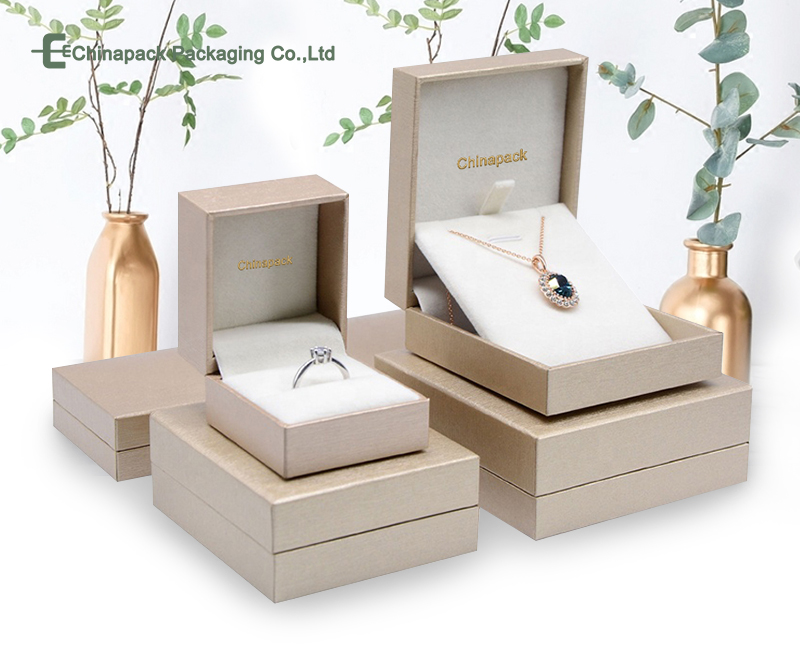Location:Home > News
Packaging knowledge
Understanding the Bronzing Process Used by Jewelry Box Suppl
Bronzing is a decorative technique that adds a layer of metallic shine to a surface, which creates a visually stunning and unique product. Jewelry box suppliers frequently use bronzing to enhance the visual appeal of their products. In this article, we will examine the process of bronzing in detail, from the materials used to the steps involved in the process. We will also explore the advantages and disadvantages of bronzing, as well as the various types of bronzing techniques that are commonly used by jewelry box suppliers. By the end of this article, you will have a better understanding of the bronzing process and how it can be used to create stunning and unique jewelry boxes.
Materials Used in Bronzing Process
The materials used in bronzing can vary depending on the type of bronzing technique used. Some of the most commonly used materials include:
Metal Powders
Metal powders are used as a source of metal in the bronzing process. The most common metals used in bronzing include copper, brass, and zinc. These metals are chosen for their ability to create a metallic shine that is highly reflective and aesthetically pleasing.
Binders
Binders are used to hold the metal powders together and to help them adhere to the surface being bronzed. The most commonly used binders include gum arabic, water, and oil.
Solvents
Solvents are used to dissolve the binders and to make them easier to apply. The most commonly used solvents include alcohol, acetone, and turpentine.
Steps Involved in Bronzing Process
The process of bronzing involves several steps, including:
Surface Preparation
The surface to be bronzed must be cleaned and polished to remove any dirt or debris that could interfere with the bronzing process. This step is critical to ensure that the bronzing adheres properly to the surface.
Application of Binder
The binder is applied to the surface using a brush or spray gun. The binder is then allowed to dry before the metal powder is applied.
Application of Metal Powder
The metal powder is applied to the surface using a brush or spray gun. The powder is then allowed to dry.
Heating
The surface is heated to a high temperature, which causes the metal powder to melt and fuse to the surface. This step is critical to ensure that the bronzing is durable and long-lasting.
Finishing
Once the surface has cooled, it is polished to remove any excess metal powder and to create a smooth and shiny surface.
Advantages and Disadvantages of Bronzing
Like any decorative technique, bronzing has its advantages and disadvantages. Some of the advantages of bronzing include:
Aesthetically Pleasing
Bronzing creates a visually stunning product that is highly reflective and unique.
Durable
Bronzing is a durable technique that can withstand wear and tear, making it ideal for jewelry boxes that are frequently handled and moved.
Versatile
Bronzing can be used on a variety of surfaces, including metal, wood, and plastic.
Some of the disadvantages of bronzing include:
Cost
Bronzing can be a costly technique, especially for large-scale production.
Time-Consuming
The bronzing process is time-consuming and requires several steps to complete.
Limited Color Options
Bronzing is limited to metallic colors, which may not be suitable for all products.
Types of Bronzing Techniques
There are several types of bronzing techniques that are commonly used by jewelry box suppliers. Some of the most popular techniques include:
Hot Stamping
Hot stamping is a technique that uses heat and pressure to transfer a metallic foil onto a surface. This technique is commonly used for text and logos on jewelry boxes.
Cold Stamping
Cold stamping is a technique that uses pressure to transfer a metallic foil onto a surface. This technique is commonly used for large areas of bronzing on jewelry boxes.
Spray Bronzing
Spray bronzing is a technique that uses a spray gun to apply a fine mist of metal powder onto a surface. This technique is commonly used for intricate designs and patterns on jewelry boxes.
Electroplating
Electroplating is a technique that uses an electric current to deposit a layer of metal onto a surface. This technique is commonly used for high-end jewelry boxes that require a thick layer of metal.
Conclusion
In summary, bronzing is a decorative technique that is commonly used by jewelry box suppliers to enhance the visual appeal of their products. The process of bronzing involves several steps, including surface preparation, application of binder, application of metal powder, heating, and finishing. Bronzing has its advantages and disadvantages, and there are several types of bronzing techniques available, including hot stamping, cold stamping, spray bronzing, and electroplating. By understanding the bronzing process and the various techniques available, you can create stunning and unique jewelry boxes that are sure to impress.





